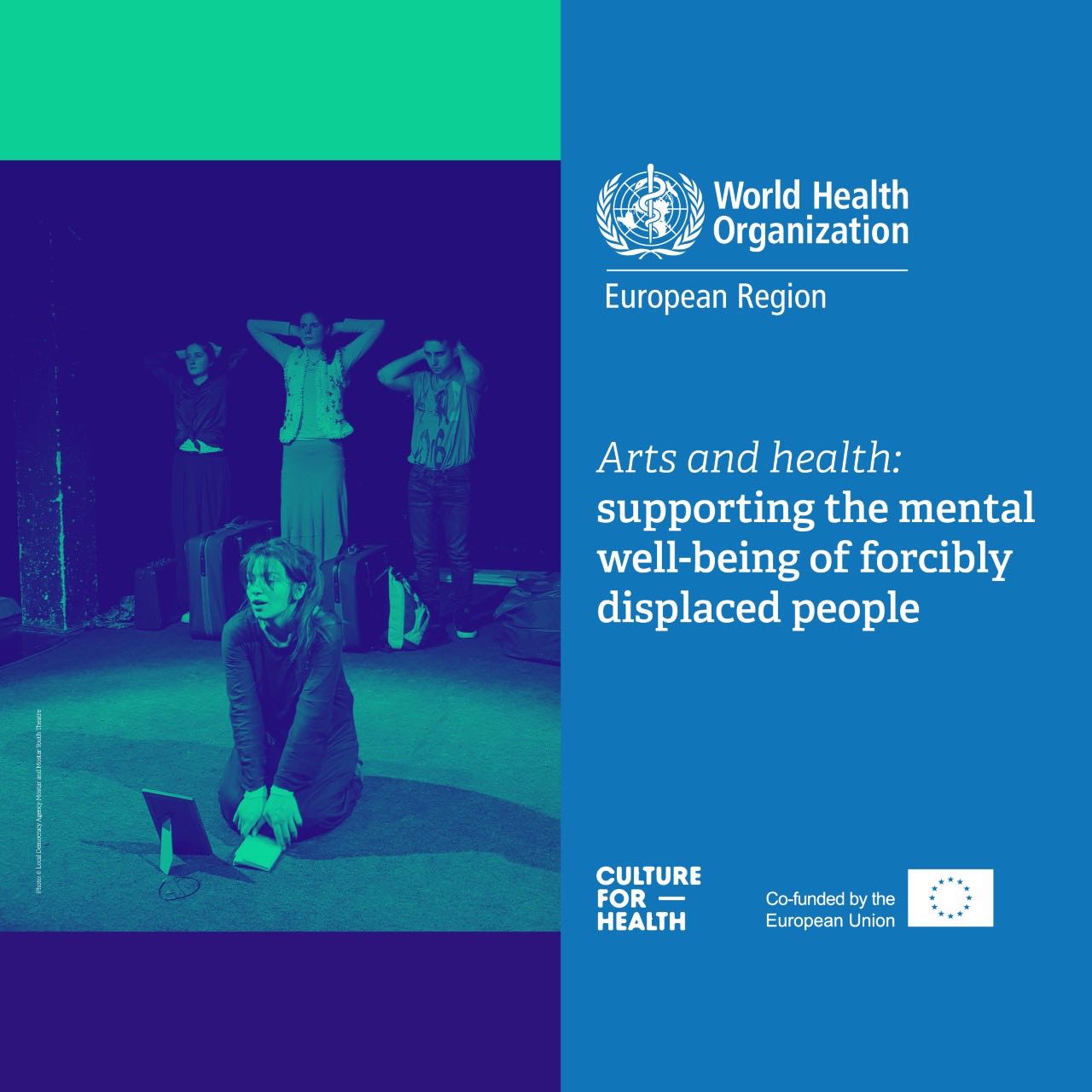How The Arts Improve Health And Well-being
In addition to improving self-confidence and promoting healthy behaviours, arts activities have also been shown to improve social inclusion and, importantly, offer hope. For displaced people, especially those who have suffered significant distress, arts activities can be relevant in improving health and well-being by promoting multiple different psychological, behavioural and social processes in displaced populations and their host communities.
Included in the report is a summary of the key findings and syntheses on the importance of culture and arts in the wellbeing of forcefully displaced people.
1. An estimated 84 million people have been displaced globally as of 2021. The war in Ukraine alone forced over 11.9 million people to leave their homes in the first half of 2022.
2. In addition to supporting the preservation of personal identity, heritage, and experience, arts activities can contribute to psychological, behavioral, and social well being.
3. The artistic expression and its varieties can be a powerful tool to promote social inclusion, social cohesion, social acceptance, and belonging for forcibly displaced individuals and their host communities.
4. Culture is a vital indicator of and contribution to resilience, health, and well-being in a community. As a result, the arts and culture have an important role to play in the well-being and social cohesion of both forcibly displaced people and their host communities.
Calls To Action
As discussed in the publication, people looking for ways in which they can support those who have been forcibly displaced should do so in collaboration and coordination with mental health and psychosocial support actors to ensure that the activities are based on locally assessed needs and adapted to the local culture. Calls to action include:
- Investment in the arts means investment in improving social integration and cohesion, and can contribute to mental well-being for all.
- Arts and cultural activities can form an important part of an organized mental health and psychosocial support response.
- Cultural and community assets can play an important role in supporting the health and wellbeing of forcibly displaced people.
- Artistic methods and practices can contribute to skill-building among those involved in humanitarian responses.
Together, health workers, policy-makers, relief workers, cultural organizations, arts therapists and artists can respond to these calls to action in order to educate and engage more people around the benefits of arts activities in their work.
About This Publication
This publication was initiated by the CultureForHealth project, which is co-funded by the European Union and led by Culture Action Europe. Key contributors include the WHO Collaborating Centre for Arts and Health, University College London; the Arts and Health initiative, New York University; and the Nuffield Department of Population Health, University of Oxford.
About CultureForHealth
CultureForHealth is a project co-funded by the European Commission with partners from all over Europe: Culture Action Europe, Trans Europe Halles, Central Denmark Region, The Northern Dimension Partnership on Culture, Cluj Cultural Centre, and Društvo Asociacija.
CultureForHealth brings researchers, practitioners and policymakers together to generate knowledge, research and fieldwork in order to trigger cross-sectoral cooperation and policies that enhance well-being through culture. The initiative will also institute six pilot projects in Denmark, Italy, Romania, Slovakia and Slovenia aiming at “management and treatment” of illnesses as well as “prevention and promotion” for a variety of life stages and age groups.
Contact
For more information please contact:
Project manager CultureForHealth:
Kornelia Kiss, Project and Operations Director, Culture Action Europe.
operations@cultureactioneurope.org
Research lead CultureForHealth:
Rarita Zbranca, Central Cultural Clujean, director de program

